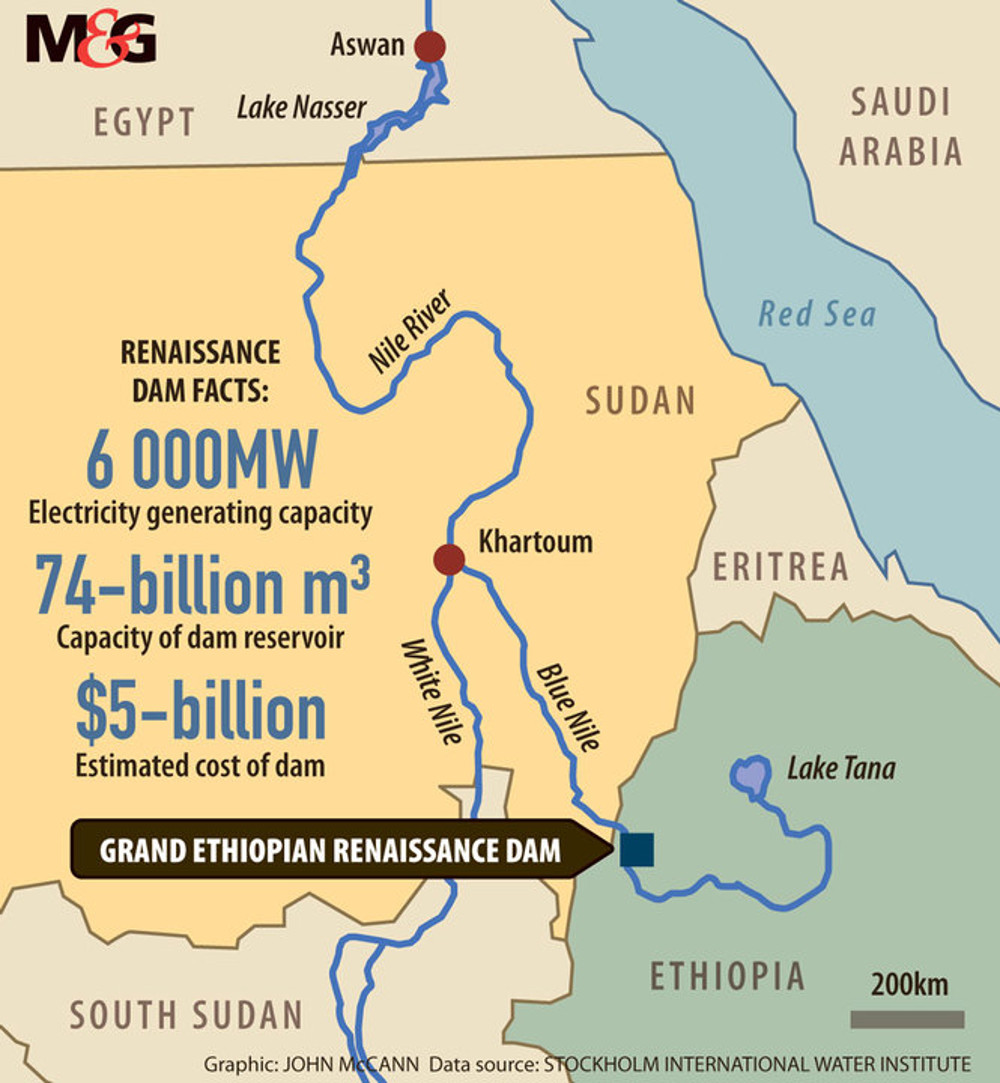The Grand Ethiopian Renaissance Dam under construction near the Sudanese-Ethiopian border. Egypt
The Nile River’s annual flood was the backbone of civilisation in Egypt. Surrounded by desert, this phenomenon ensured that a thin ribbon of green expanded each season to allow for a harvest. Nutrient-rich silt and water for irrigation canals meant enough grain to feed an empire. But poor planning and a changing climate are disrupting this critical annual event.
The opening of the Aswan Dam in 1970 stopped the annual flood. Nearly 900km from the point at which the Nile flows into the Mediterranean Sea, this artificial barrier brought water security to Egypt and allowed the country to release water in its dry season.
Although that meant more consistent water for irrigation, it took away the flood and silt that lowered the salinity of farmland and brought in fresh nutrients. Since then, farmers have had to use fertilisers to do what nature used to do.
But they have still had water.
Now, new research predicts that the uncertainty that comes with climate change will mean years of extreme rainfall and then shattering drought in the region.

The research, published in the peer-reviewed journal Nature Climate Change, predicted a few years that are considered normal, when the Nile will have between 70 and 100 cubic kilometres of water flowing through it each year.
In the future, the total amount of water flowing in the Nile will increase by 10%, it said. But this will come in a few years of extreme flood, and then vanish in years of intense drought. That has already started to happen: an intense El Niño cycle in 2015 meant drought conditions across the Nile basin, and a La Niña in 2016 meant widespread flooding.
Given this, the researchers said: “It’s not abstract. This is happening now.” Their research on how climate change affects the flow of the Nile was done by a team from the Massachusetts Institute of Technology (MIT), using computer simulations for climate change in North Africa and the Middle East.
The study noted that the number of people living in the countries along the Nile basin is projected to double by 2050, approaching a billion. That will inevitably put strain on already scarce water resources, with climate change further compounding the situation.
For Egypt, which is downriver of other countries that are also building dams, that variability will increase the strain on its water resources.
The Nile delta is home to some 40‑million people, half of Egypt’s population. It is also home to two of the country’s largest cities — Alexandria and Port Said.
At the same time, climate change is eating away at the delta. Predictions by the government — as part of submissions to the Intergovernmental Panel on Climate Change — are that a third of the delta will be submerged by the 2030s.
The Mediterranean Sea is rising by more than a millimetre a year.
Egypt has already allocated $300‑million for the construction of concrete walls around Alexandria, to protect it from rising sea levels.
Even though there is little the country can do to stop rising sea levels eating away at its increasingly valuable land, the MIT research concluded that Egypt would have to store water in “huge reservoirs” to manage the years when nothing falls from the sky.